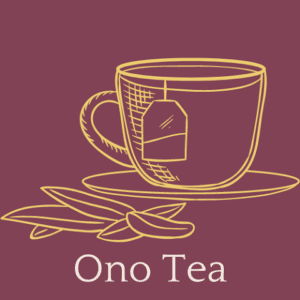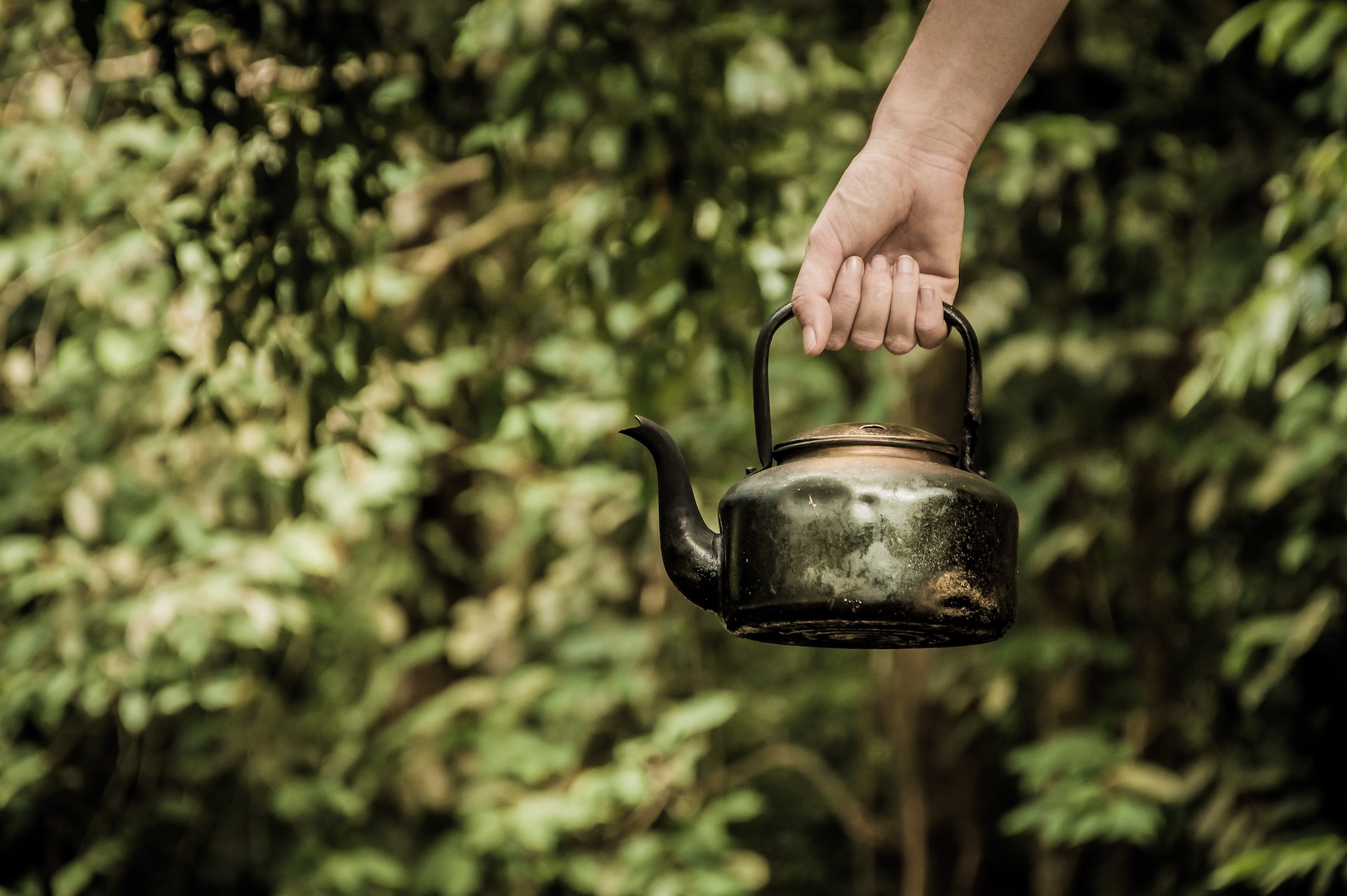Oolong is a Chinese tea with a rich history. Also known as black dragon tea, it is one of the organic teas you can have. Unlike black and green teas, Oolong is partially oxidized and roasted to give it a unique flavor and aroma. These properties have made Oolong tea a sensation among those who want to lead a healthy lifestyle.
The popularity of this tea can be attributed to its health benefits. Some benefits include helping with weight loss, lowering blood sugar, and maintaining insulin levels. Besides, it has antioxidant properties. These Oolong tea reviews will help you choose the best tea bags for your preferences. Read it to the end to learn more.
Best Oolong Tea Reviews
1. VAHDAM, Himalayan Oolong Tea Bags : Best Overall Loose Leaf Tea
: Best Overall Loose Leaf Tea
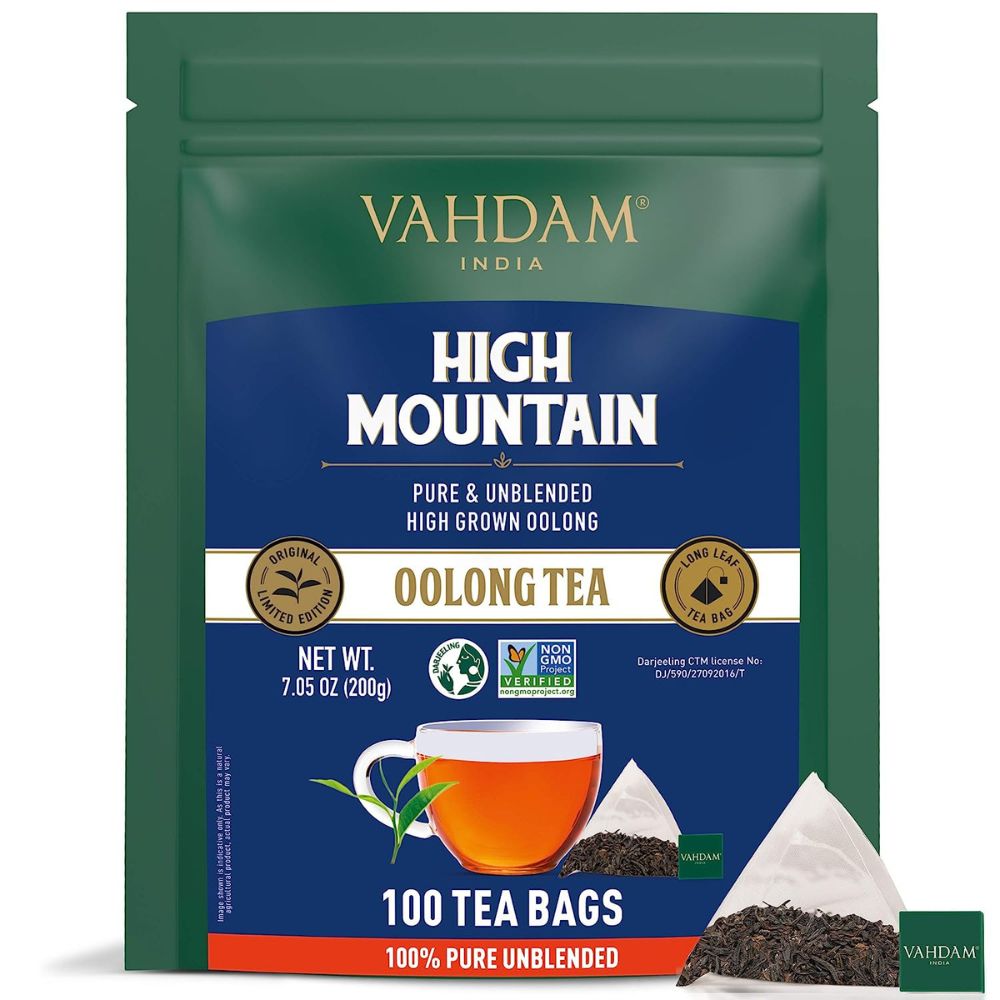
This is a must-sip tea that you should give a try. VAHDAM, Himalayan Oolong Tea comes as 100% pure unblended tea leaves, giving you the original taste of dried fruit flavor. Sourced from the high mountains, this Oolong tea gives you a hassle-free brew as it comes in sachets.
The manufacturer goes to great lengths to ensure that you only need one tea bag per 200 ml of hot water by skillfully oxidizing it.
Thanks to its unblended nature, you can have this Oolong tea iced or hot. This tea is gluten-free. It comes in 100 teabags, giving you several cups of your favorite organic tea. The packaging is carbon-neutral. The company uses innovative supply chains for sustainability.
Pros
- Loose leaves
- Gluten-free
- Ethical
- 100 tea bags
Cons
- Weak
- No much aroma
2. Choice Organics: Organic Oolong Tea : Best Organic Tea
: Best Organic Tea
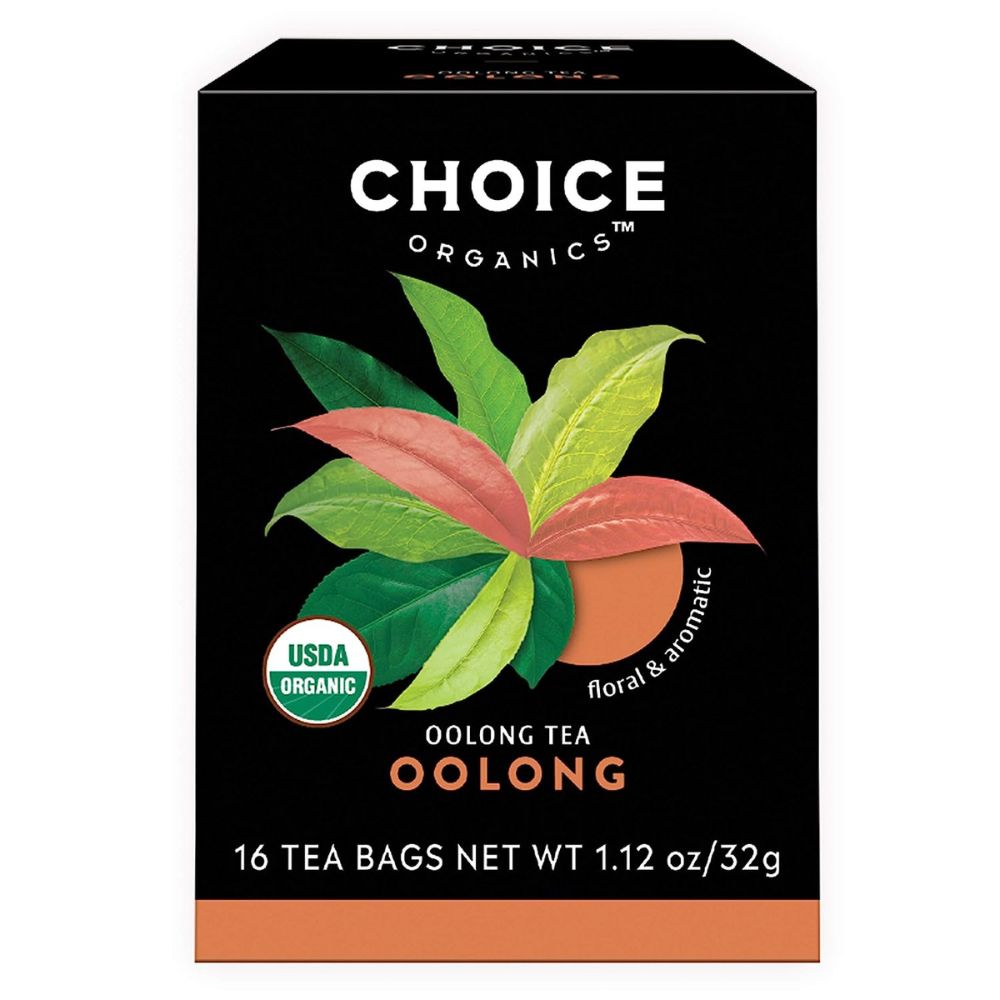
Choice Organics is your go-to Oolong tea if you want a refreshing cup of healthy tea. Manufactured by the East West Tea Company, this tea is made of organic Oolong tea leaves that are vegan-friendly. Choice Organics has a floral and aromatic flavor that balances a roasted taste.
This company doesn’t add any sweetener to the tea, giving it a natural taste.
This Oolong tea contains about 40 mg of caffeine per serving, making it ideal for improving mood and enhancing brain function. The tea is blended in an LED-certified facility, making it safe for consumption. This tea comes in teabag form with a total of 96 sachets, giving you several cups. The tea bags are individually packed in biodegradable tea bags, making them environmentally friendly.
Pros
- Organic
- Safe
- Sustainably sourced
- Vegan-friendly
Cons
- Bitter
- Flimsy tea bags
3. Prince of Peace Organic Oolong Tea : Best for Low-Caffeine Oolong Tea
: Best for Low-Caffeine Oolong Tea
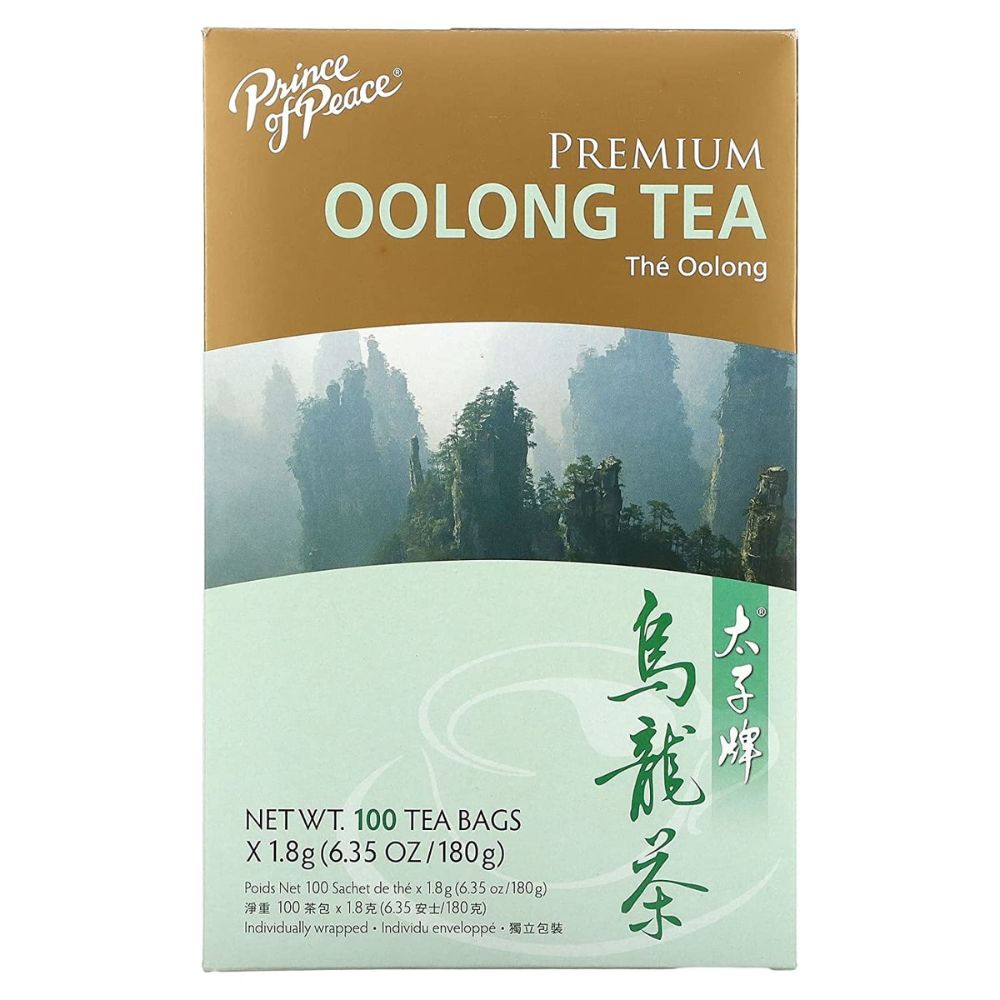
Prince of Peace is the best option if you want a low-caffeine Oolong tea. Originating from the Wuyi District of Fujian, China, this tea has a woody aroma combined with a full-bodied aroma. This feature makes it refreshing.
It contains about 30 mg of caffeine per serving, making it ideal for including in your weight loss diet. This tea contains pure ingredients that are vegan-friendly and safe.
Thanks to its semi-fermentation, Prince of Peace has the rich taste of black tea. Besides, it comes packed with the antioxidant benefits of green tea. This ideal coffee alternative comes in 100 tea bags, giving you a prolonged drinking experience. The tea leaves come in a biodegradable package, making them environmentally friendly.
Pros
- Low caffeine
- Certified organic
- Easy to brew
- Rich taste
Cons
- There are not enough tea leaves in the bags
- Odor
4. Imozai Organic Oolong Tea Bags : Best for Individually Wrapped Tea Bags
: Best for Individually Wrapped Tea Bags
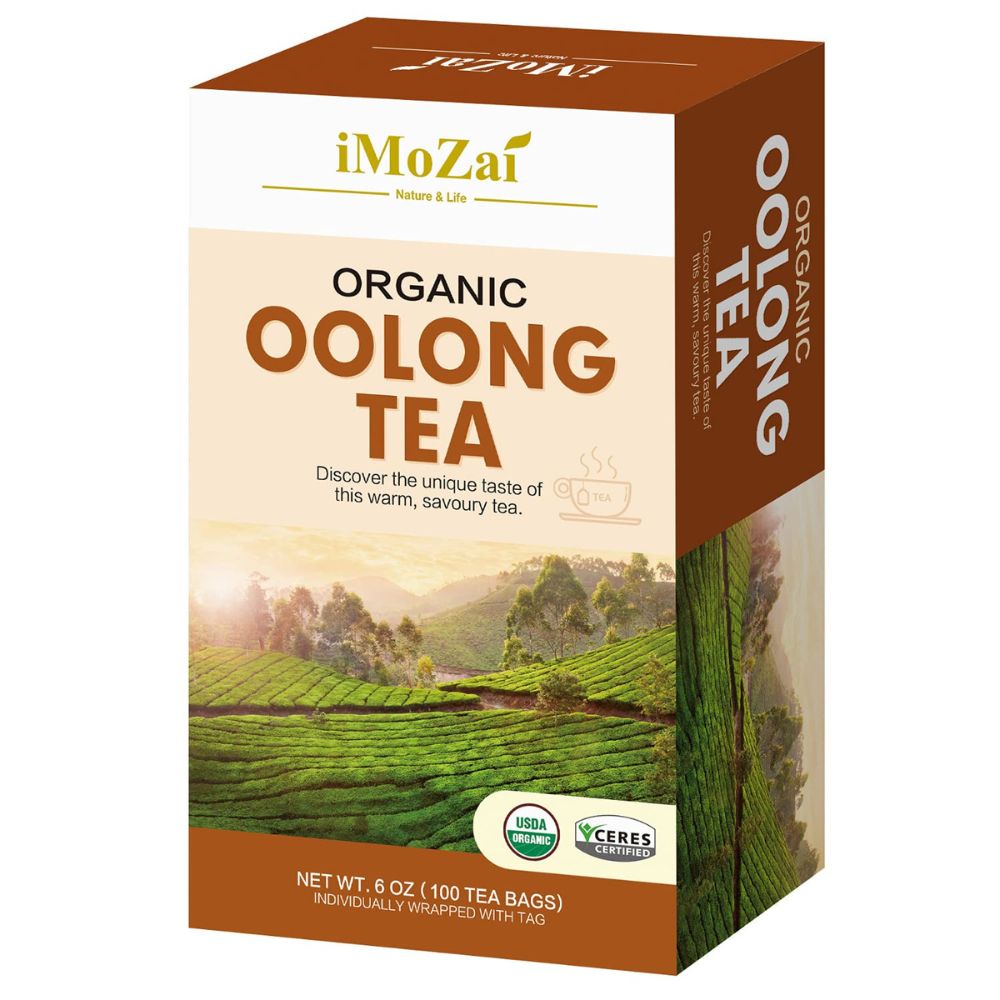
Coming in 200 individually wrapped bags, Imozai Organic Tea is arguably the best option if you are in for several cups. This tea has a smooth flavor. Therefore, it is ideal for a morning drink. Imozai Oolong tea is made from 100% organic tea leaves, making it safe for consumption
Thanks to its fewer calories and non-sweetened nature, this tea has health benefits, such as the potential to improve heart health.
This tea is packed in biodegradable bags, making it sustainable. Besides, the tea bags in which they are packed allows convenient brewing. The skillful packaging in a sealed bag ensures that the tea leaves stay fresh. It is safe to say that buying Imozai Organic Oolong tea will get you value for your money in terms of quantity and quality.
Pros
- 200 pieces
- Delicious taste
- Non-sweetened
- Well-packed
Cons
- Weak
- May cause stomach upset
5. Honey Orchid Oolong Tea : Best Double-Baked Oolong Tea Leaves
: Best Double-Baked Oolong Tea Leaves
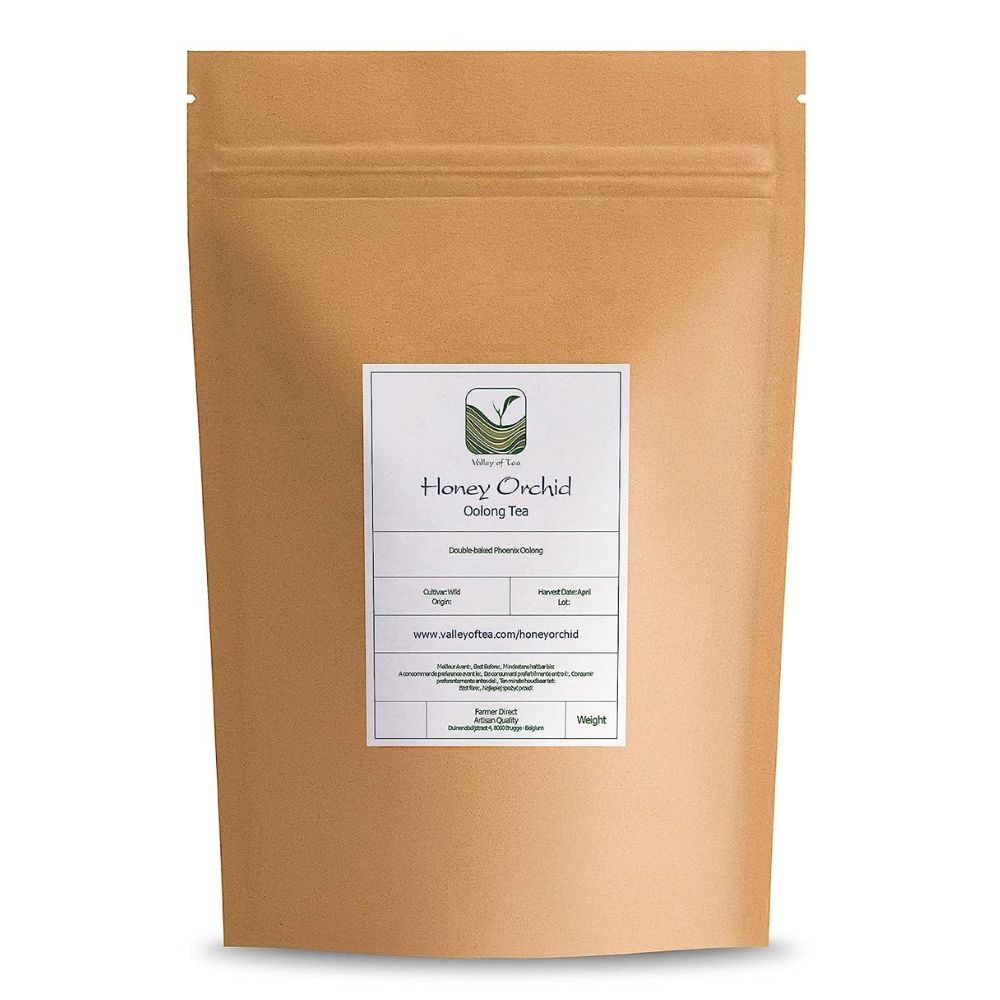
Honey Orchid is a Phoenix Dan Cong Chinese tea that is double-baked. This traditional processing makes this tea dark and gives it an intense delicious fruity taste. Honey Orchid comes as loose leaves along you to test your brewing skills.
Cultivated in Fenghuang, this tea is 100% organic making it safe and sustainable. This tea is undoubtedly the best option if you are a connoisseur.
Thanks to its low caffeine, this tea is best as a bedtime drink which will give you a good night’s sleep. It has this feature due to the slow processing at low temperatures. You will get 50mg when you order this Oolong tea, giving you 20-25 cups.
Pros
- Loose leaves
- Double-baked
- Sourced from artisan tea farms
- Healthy
Cons
- Not beginner friendly
- Bitter
Factors to Consider When Choosing Oolong Tea
Choosing Oolong tea is quite challenging due to the different types. Some common types are Ti Kuan Yin, Anji Bai Cha, Dancong Oolong, and Ding Dong Oolong. Still, they come in different flavors, aromas, and aftertaste. Here are the factors you should consider when choosing your Oolong tea bags:
Country of Origin
It’d be best first to consider the country of origin. China, India, and Taiwan are among the primary producers of Oolong tea. Considering this factor is essential because of the following reasons:
- Unique Terroir: Oolong tea is similar to wine in that it reflects the character of the area the teas are cultivated. Climate, altitude, soil composition, and surrounding vegetation determine flavor and aroma. For instance, Oolong teas from Taiwan have more floral taste than those from China.
- Microclimates: A specific region’s microclimate also affects the quality of Oolong tea. For example, Oolong tea plants grown in the high altitude areas of Taiwan have a floral flavor. In comparison, the ones grown in lower elevations have a more robust character.
- Traditional Expertise: Regions with a long history of cultivating Oolong tea produce the best quality, like Tie Guan Yin from China and Dong Ding from Taiwan. These regions have developed specialist knowledge in growing and processing tea leaves.
Processing method
It is also essential to consider the processing method because it impacts the flavor and aroma. As we mentioned earlier, Oolong tea is partially oxidized. The degree of oxidation depends on the method used.
In traditional processing, the tea leaves are withered, rolled, and oxidized before being roasted. The roasting stops oxidation, giving the Oolong tea its unique taste. The semi-traditional method is similar to the former, with the oxidation time being the difference. Its short oxidation period makes oolong tea a lighter tea. Modern methods use machines in a controlled environment, resulting in consistent Oolong tea.
Price
It’d help to consider the price, as it indicates quality and origin. The high-priced Oolong tea is made from better-quality tea leaves. Such teas are also from other countries with exceptional product knowledge. However, it is worth noting that you should buy tea bags that are within your budget. Price comparison is essential to determining the most suitable Oolong tea at a reasonable price.
How to Brew the Best Cup of Oolong Tea
You can prepare a cup of Oolong tea using hot water and one tea bag. Note that the Oolong teas in tea bags are easy to brew. Alternatively, you can test your brewing skills, like here, using loose-leaf tea.
You will follow these steps to brew it.
Step 1: Choose Your Teaware
You will start by choosing the tea vessels to use in the brewing process. This will depend on the brewing method you choose between the Western and Chinese methods. It is worth noting that the Western method is beginner-friendly. Whichever the case, you will need any teapot for the Western style. For Chinese brewing, you will need a Gaiwan or Yixing teapot.
Step 2: Prepare the Oolong Tea Leaves
After that, you will prepare your tea leaves, with loose leaves among the best. Oolong tea bags are also usable. Although the taste won’t be the same, measure a teaspoonful of balled leaves for 6 ounces of water. You will need two teaspoonfuls if you are using loose leaves.
Step 3: Heat the Water
In this step, you will prepare your water by heating it. Ensure that you use high-quality water that isn’t tap or distilled water because it determines the taste of your cup. When heating, make sure the water is between 185°F and 205 °F. Once you hit the right temperature, you will use some of it to warm the teaware, then discard it. This process creates the ideal steeping environment after mixing your tea leaves with hot water.
Step 4: Steep
In this step, you will steep the tea in your tea vessel for nearly five minutes. This process will give you flavor. Note that too much hot water will result in a bitter cup of Oolong tea, while cold water will result in a weak one.
If you prefer your Oolong tea iced, you will steep the tea for 10 minutes. In this step, you can add milk or soy and sweeteners like honey.
FAQs
1. What differentiates Oolong tea from green tea and black tea?
The difference is in how the tea is processed, its color, leaf size, and flavor. Green tea is unoxidized. The Oolong is partially oxidized, and the black tea is fully oxidized. White tea is the least processed. The leaves of white tea are small, the same as green tea, although the green one is rolled.
Oolong and black teas have large, open tea leaves. Green tea has a grassy taste; Oolong tea has a floral and fruity flavor; and black tea has a strong, robust taste. The white tea has a delicate, floral taste with a sweet hint. It will help to know the difference to help you with the selection process.
2. Does drinking Oolong tea have any side effects?
Yes, drinking too much Oolong tea has side effects. Some of the common ones that have since been reported include:
Insomnia
Tremors
Nervousness
Rapid heartbeat
Abdominal pain
Nausea and vomiting
Therefore, you should only drink 1–4 cups of Oolong tea daily. Experts consider the amount moderate. However, you should avoid it or consult your healthcare provider if you are taking blood pressure medication, are diabetic, or have an underlying medical condition.
3. When is the best time to drink Oolong tea?
You should drink Oolong tea in the morning to improve your alertness and boost your cognitive functions. Taking it in the afternoon is also ideal, as it can reduce stress and anxiety. And if you want to reap its rich antioxidants, you should take it at night before bed. However, bedtime drinks should have low caffeine content for a restful night.
Conclusion
Thanks to its several benefits, Oolong tea has become popular in recent years. However, choosing the right one can be challenging if you don’t know which flavor and type are best for you. This detailed article covers the reviews and guides you on choosing tea leaves. It also shows you how to brew a cup like a pro. It’d be best to use the information and get a taste of this great tea!
